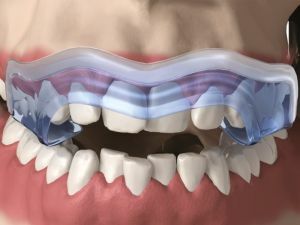 Neuromuscular dentistry is a separate section of medicine that studies violations of the muscles and joints of the dentoalveolar system.
Neuromuscular dentistry is a separate section of medicine that studies violations of the muscles and joints of the dentoalveolar system.
Doctors use different methods of restorative treatment to achieve an aesthetic result. During the work, the correct interaction of the lower and upper jaw is restored.
Contents of
- What is orthotics?
- Indications for use
- Design features
- Diagnostic methods
- Bus manufacturer
- Action plan
- Rules for wearing
- design Advantages of using
- myoshin From the practice of patients
- Cost of procedure
What is orthotics?
The investigation of the patient's jaw is carried out, and the result is the decision to make an orthotics. In another way this design is called an occlusive muscle relaxant tire. The main task of the device is to compare both jaws to the correct position.
Represents a special cap that is designed to be worn on the lower jaw. The period of recovery of muscles and joints takes several months. Orthotics can have removable and non-removable structures. The choice of one of them depends on the severity of the malocclusion.
A non-removable orthotics provides a fixed fixation to the teeth, regulates functional loads. When it is used 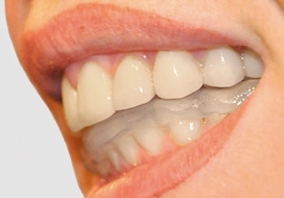 the chewing process is normalized without affecting the speech functions. The installation of such products requires the preparation of teeth. The disadvantage is the deterioration of oral hygiene.
the chewing process is normalized without affecting the speech functions. The installation of such products requires the preparation of teeth. The disadvantage is the deterioration of oral hygiene.
As a result of the treatment, the teeth should move to the desired position and take the correct anatomical shape. After the need for a kapa disappears, it is possible to start restoration of teeth and orthodontic treatment.
Indications for use
The need for the installation of a muscle relaxant tire is detected at the reception of a specialist and during the examination. The main indications for wearing it are the following cases:
- bruxism - nocturnal grinding of teeth;
- the need to improve the functionality of the TMJ;
- elimination of muscular dysfunction;
- pathology of the joints of the chewing apparatus;
- need to replace several or one tooth;
- giving the right position for the lower jaw;
- need to increase the vertical height of the bite.
The duration of wearing a structure depends on the severity of the pathological process.
Design Species
Depending on the functional purpose and design features, the occlusal tires can be of the following types:
- Relaxation .Centralize the localization of joints, contribute to a decrease in muscle tone.
- Decompression .Assigned with compression in the posterior or upper part of the TMJ.
- Stabilizing .Provide contact between the teeth on the lower and upper jaw.
- Positioning .Align the position of the teeth.
- The .Return the entire row of teeth to the desired position.
When manufacturing the tire, the chosen treatment position is taken into account, as a result of which it will be possible to remove the load from one or both joints.
Diagnostic methods
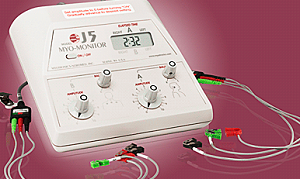 Neuromuscular dentistry involves the diagnosis of the dentoalveolar system. With the help of a special drug muscles of the neck, head, upper dorsal region are relaxed, as a result of which the modern computer system makes it possible to reveal dentogamous pathologies.
Neuromuscular dentistry involves the diagnosis of the dentoalveolar system. With the help of a special drug muscles of the neck, head, upper dorsal region are relaxed, as a result of which the modern computer system makes it possible to reveal dentogamous pathologies.
After this, a physiologically correct bite is determined.
The complex of applied diagnostic equipment and techniques includes:
- The mydmonitor is an electronic device that causes muscle contractions, after which they relax.
- Computer diagnostics - electromyography , which determines the muscle tone and the ability of the jaw to move. This makes it possible to determine in full the state of the jaw when it is in a mobile state and at rest.
- Sonography catches even small noises in the joints, determines how the temporomandibular joint works. Having studied the received information, it is possible to make an accurate representation of the position of the lower jaw relative to the upper one.
After all the studies carried out, the orthotic required in each particular case is produced.
Thanks to this treatment, the teeth move to the correct position. The bite becomes even and gives the patient an excellent smile.
Manufacturing of
tires Hypoallergenic plastic acts as a material for the manufacture of muscle relaxant tires. It has an extraordinary softness and elastic structure. 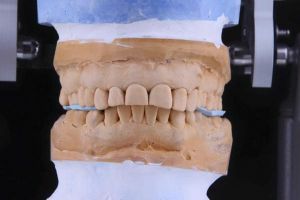
Each product is made based on the characteristics of the pathological arrangement of the teeth in the patient. For this preliminary radiography and computed tomography are performed. After receiving a panoramic image, you can make a picture of the condition of the ligaments and muscles of the chewing apparatus. Also studied is a physiologically correct bite, obtained with the help of a myomonitor.
In addition, it is necessary to remove the impression from the lower jaw and transfer it to the laboratory, where specialists conduct computer simulation of the future design. For this they have the results of all the studies and the mold of the jaw itself.
When manufacturing orthotics, the following factors are taken into account:
- therapeutic plan;
- duration of the treatment course;
- required rigidity of the product;
- design features, with which the mioshin will be installed.
Action Plan Installation of the kapa does not cause difficulties, but requires a special action plan:
- general diagnostics of the patient's jaw system;
- relaxation of the masticatory muscles;
- definition of the right occlusion;
- manufacturing of orthotics;
- wearing a design, depending on the severity of the pathology, this period can take from three months to one year;
- after the removal of the kapa, restoration of teeth is carried out.
After the treatment, the patient will receive an ideal smile with the correct operation of all jaw systems.
Rules for wearing a design
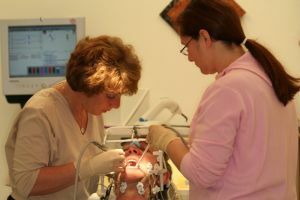 Specialists recommend wearing an orthotic for at least six months to achieve the greatest effect. At this time the jaw muscles are prepared for the subsequent restoration of teeth or for orthodontic treatment.
Specialists recommend wearing an orthotic for at least six months to achieve the greatest effect. At this time the jaw muscles are prepared for the subsequent restoration of teeth or for orthodontic treatment.
During the period of operation of the structure, the symptoms of impaired TMJ functions are weakened in the patient, and in some cases disappear altogether.
Fixed tires are assigned for serious violations and they are the basis of the treatment technique. During the time the patient wears a cap, he has a decreased load on the joint of the lower jaw, which leads to an effective result in the future.
During the operation of the occlusal bus, the patient should follow certain rules:
- It is necessary to wear the construction constantly. You can not remove the muscle relaxant tire even at night. This is important in order to keep contact between the teeth on the lower and upper jaw. During sleep, a person involuntarily clenches his teeth while swallowing.
- When visiting a dentist, the cap should also be in the mouth so that the doctor can see how well the joints are positioned.
- With a small space between the teeth, you do not need to press the kapa specifically.
- The design should be stored in a special solution in a closed container. In this way, the plastic will remain soft.
- When brushing your teeth, you need to clean it yourself and orthotics. You can do this with a usual brush and paste.
- It is necessary to visit a specialist regularly to adjust the condition of the surface of the structure. As the treatment is going on, it will be necessary to remove or, on the contrary, add a layer of plastic on the orthotics.
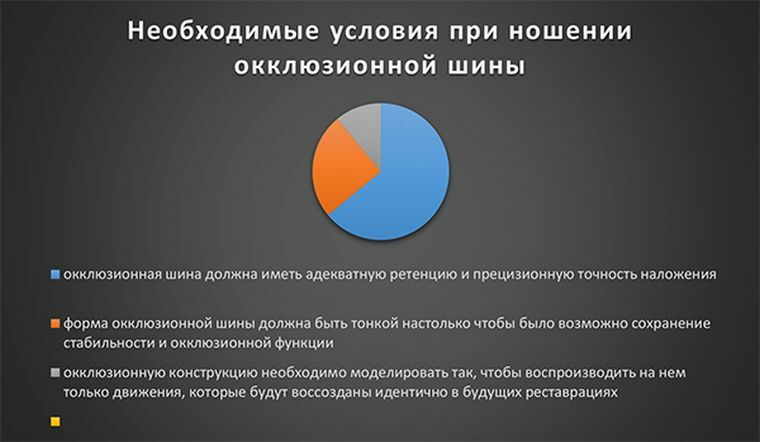
Even if the patient does not notice any positive changes, all the rules for using the product must be observed.
Advantages of the
machine application Wearing the structure contributes to the following improvements:
- , the functionality of the mandibular joint is established;
- muscle pains disappear;
- gets the right position of the teeth;
- with bruxism reduces the abrasion of the enamel;
- the general condition of the oral cavity is significantly improved.
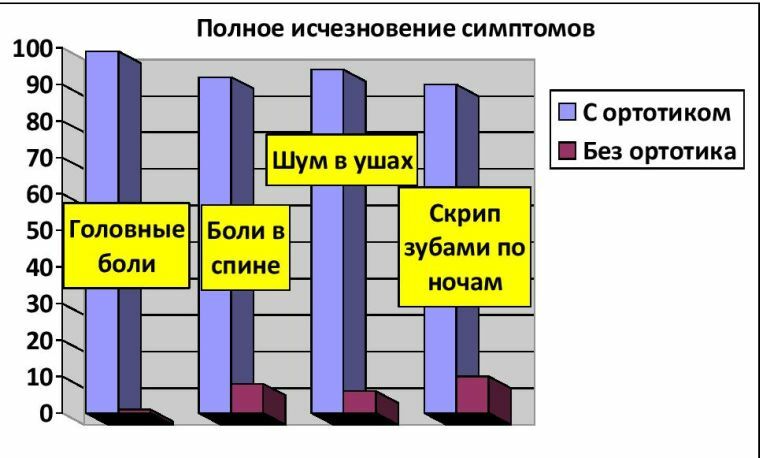
From the practice of patients
Reviews of patients who are being treated with orthotics.
I've been walking with an occlusive tire for a month and a half. I try not to take it out of my mouth. The other day I noticed that the jaw ceased to make a clicking sound. When you have to remove the product, the jaw still remains in the given position. I hope that I will not need long treatment, and my teeth will quickly fall into place.
Nina Karimovna, 38
I dreamed of beautiful, smooth teeth from early childhood. And only now, when I'm almost 30 years old, I decided to change my smile for the better. The doctors immediately warned me that I would have to walk with orthotics for at least six months, and most likely even a year. Three months have passed, but it seems to me that the changes are already visible. I do not feel any unpleasant sensations.
Alina, 28
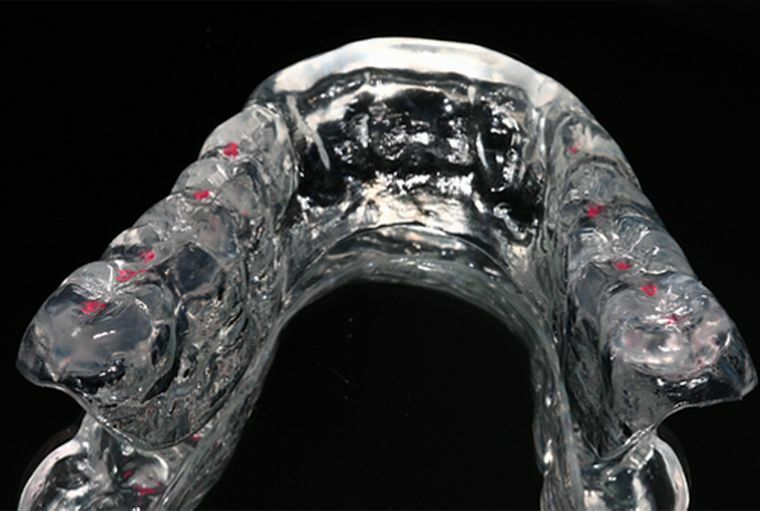
Cost of procedure
The installation of a muscle relaxant kappa is a costly procedure. The price of the product depends on the severity of the pathology and the type of construction. The cost starts from 10 thousand rubles and above.
